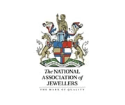Last week we explored the world of creatures on coins, both great and small. One of the most interesting animal depictions we talked about was the Yale of Beaufort, a legendary creature celebrated in the Tudor era.
Here we will highlight some of the other coins from the Royal Mint’s collections that celebrate the Tudor dynasty.
Whether it is the many books about the Tudor period like Wolf Hall, films about Henry VIII like A Man For All Seasons, or TV shows like The Tudors; there is no shortage of British and now international interest in the Tudor period.
The Royal Tudor Beasts gold coin collection
The Tudors, who came to power when the House of Lancaster destroyed the House of York following the Wars of the Roses, became a formidable dynasty. Henry VII, the first tudor king, united the houses by marrying Elizabeth of York. He also sought other ways to cement the legitimacy of the Tudor family and his own reign.
One way he did this was by indulging and reviving the mediaeval tradition of heraldry to display motifs and symbols of the Tudor family and the monarchy wherever possible, reinforcing his rightful position on the English throne.
The more culturally famous Henry VIII continued his father’s commitment to reinforcing the Tudor dynasty and its claim to the throne. One place that was most symbolic of Tudor power and significance is Hampton Court Palace. Whilst we think of Buckingham Palace as the home of the Royal family, Hampton court at the time was Henry VIII’s most famous residence.
The moat bridge that connects Hampton Court to the outside world is lined by ten stone beasts. Each beast in some way represents the lineage of both King Henry VIII and his third wife, Jane Seymour. These beasts include both real beasts such as lions and panthers, as well as mythical creatures like dragons and unicorns. These ten beasts will be celebrated in the Royal Mint’s Royal Tudor Beasts coin collection. Three, including the Yale of Beaufort, have been released.
The Lion of England
The Lion of England is among the oldest and most iconic animals in heraldic art. Beginning in the 12th century, the Lion was used as an official symbol of England on its shield (which acted like a flag). Representing the pride and courage of the nation, the Lion of England stood proud on the Moat Bridge at Hampton Court Palace. It also held a shield which depicted the arms of Henry VIII and Jane Seymour coming together, which was to symbolise the strength of the couple’s union.
The Seymour Panther
Following on from the Lion of England, which most closely represented the King, the Seymour Panther in turn represented Jane Seymour. The stone beast on the side of the bridge was depicted as a ferocious animal, with flames coming from its mouth and ears. However, in many ways the Seymour Panther was supposed to symbolise the loving union between the king and Jane, who had provided him with the male heir he so desperately yearned for.
As mentioned previously, whilst the Lion of England and the Seymour Panther are currently available; the Bull of Clarence, the Tudor Dragon, the Greyhound of Richmond, the Royal Dragon, the Yale of Beaufort, the Seymour Unicorn, the Queen’s Panther and the Queen’s Lion will all follow over the next five years.
If you are interested in learning more about coins that feature animals, you can read this piece about our favourite Golden depictions of animals.















